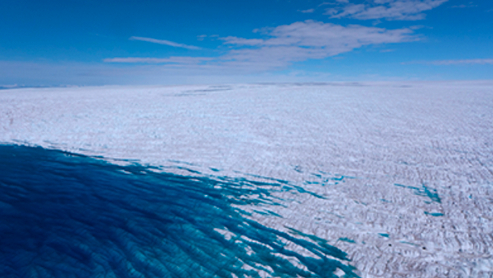Complex effects in nonlinear free surface waves: ice, shear and electric fields
We study "ice waves", or hydroelastic waves, to improve engineering design of roads and aircraft runways in polar regions and other engineering applications.

The objective is to study nonlinear interfacial waves between air and water in the presence of an ice cover (or a flexible cover) and shear current and waves between a fluid and gas (either conducting or dielectric) in the pres-ence of electric fields, by using analytic or numerical approaches.
Project outline
For the problem of “ice waves”, a main difficulty in studying these waves theoretically lies in the modelling of the deformation of the ice sheet, and a number of models have been proposed. The earliest models use linear water wave theory combined with the Euler–Bernoulli beam theory which is a good approximation for small-amplitude wave motions but not suitable for large amplitude. A novel model is recently introduced based on the Cosserat theory of hyperelastic shells which can be used for fully nonlinear computations including the fluid by employing a time-dependent conformal mapping. In the presence of a shear current, the irrotational formu-lation remains valid subject to an appropriate modification. Travelling wave solutions, wave stabilities and dy-namics can be all investigated under such framework.
The electrohydrodynamics (EHD) problem is mainly concerned with studying the interaction between fluid mo-tion and electric field. The major difficulty of this problem is to deal with the coupling via the Maxwell stress tensor. Multi-scale methods are being used to study the weakly nonlinear regime under the assumption of long wave or short-wave limit. The fully nonlinear problem can be solved numerically by using again the time-dependent conformal mapping technique combined with a novel interpolation matching method imposed on the interface.
Impact
Hydroelastic waves have recently received significant research interest due to their wide applications in model-ling floating ice. An in-depth understanding of this subject can enhance the engineering design of roads and aircraft runways in polar regions, as well as the construction of ‘very large floating structures’ in offshore and coastal areas. EHD waves are widely present in engineering applications such as for coating process and cooling systems. Due to its significant importance in industry, a theoretical understanding in EHD problems is necessary to improve efficiency.
